Abstract
Different pedigree structures and likelihoods are examined to determine their efficiency for parameter estimation under one-locus models. For the cases simulated, family size has little effect; estimates based on unconditional likelihoods are generally more efficient than those based on conditional likelihoods. The proposed method of pedigree analysis under a one-locus model is found to be robust in the analysis of nuclear families: skewness of the data and polygenic inheritance will not lead to the spurious detection of major loci unless they occur simultaneously, and together with a moderate amount of environmental correlation among sibs.
Full text
PDF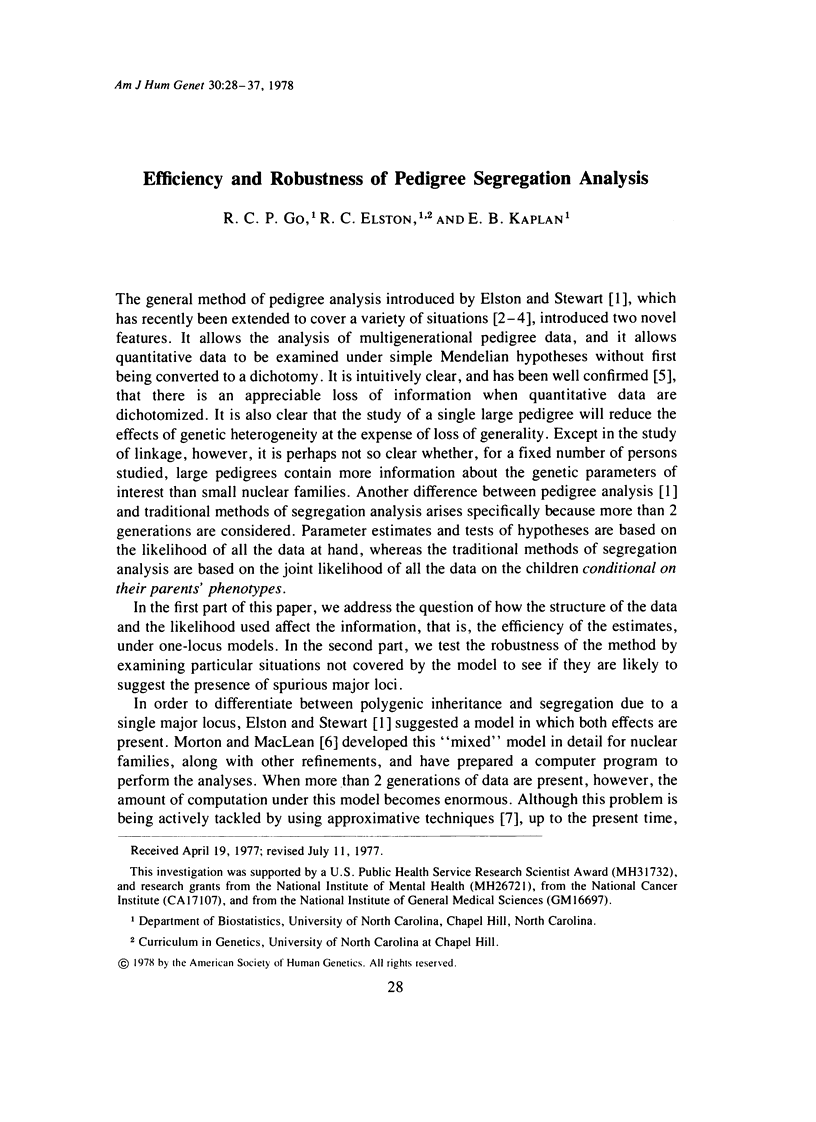
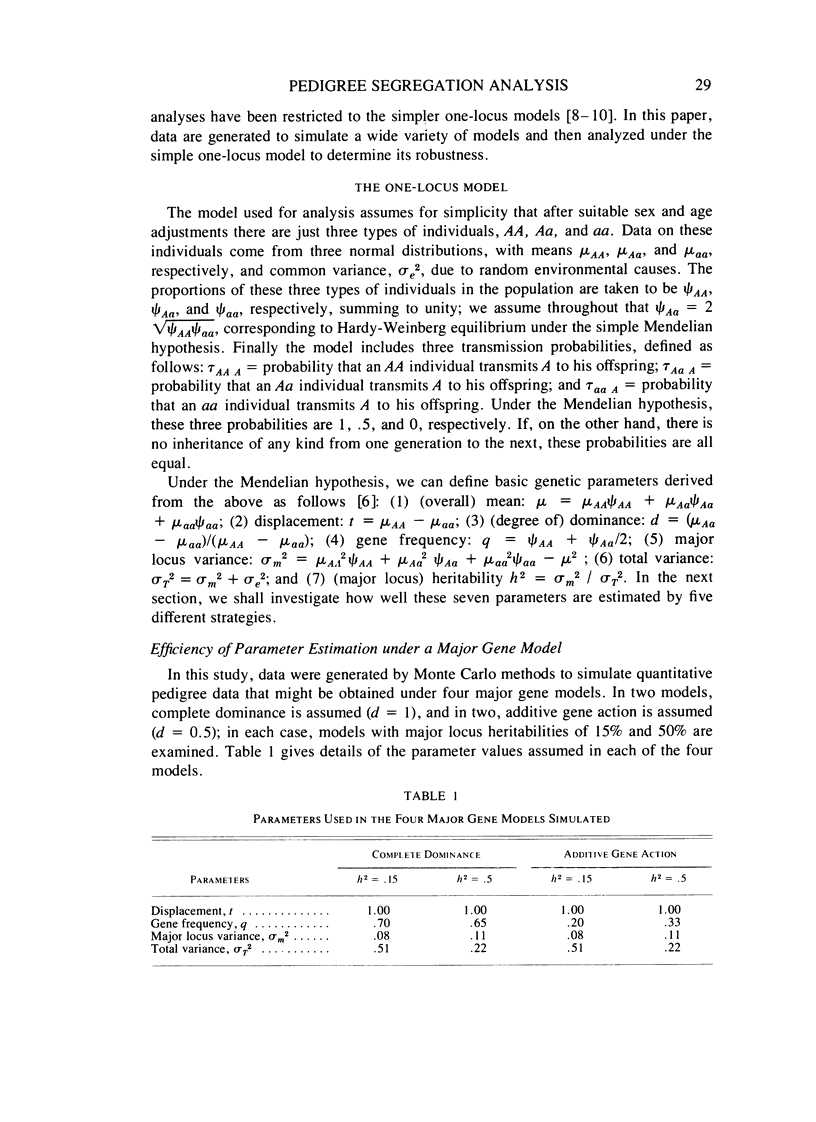
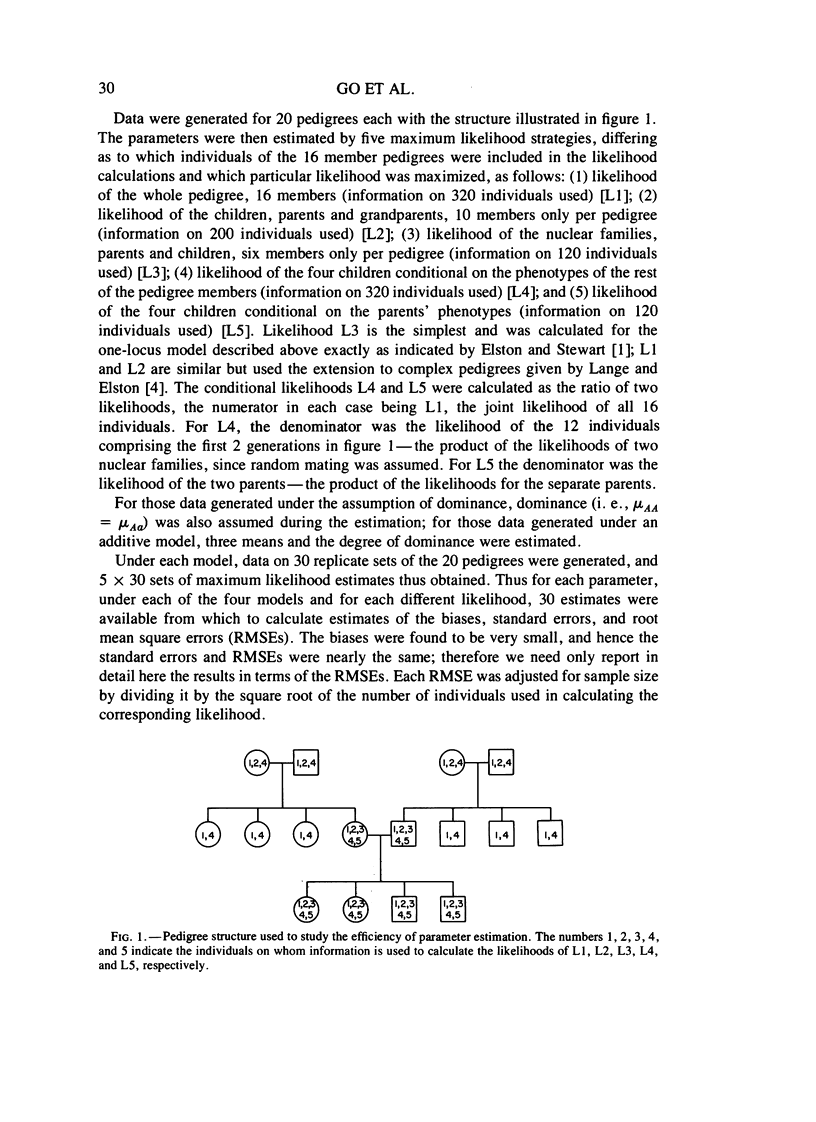
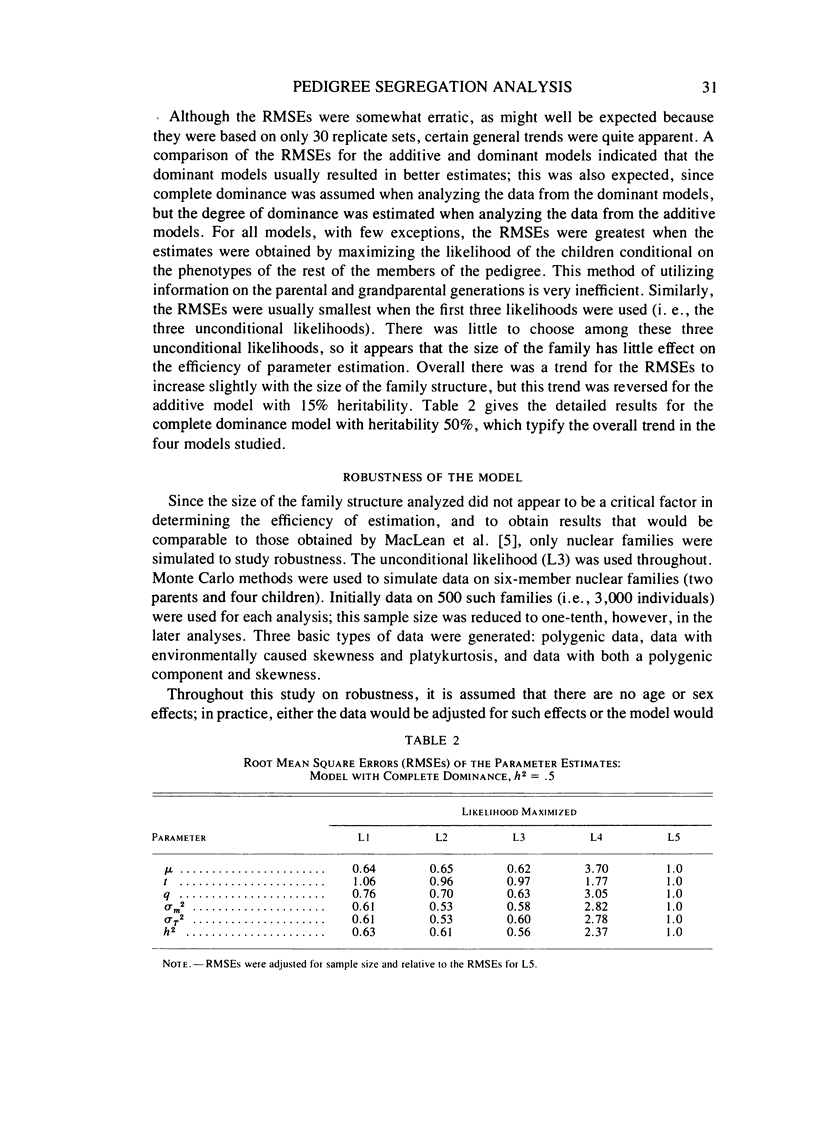
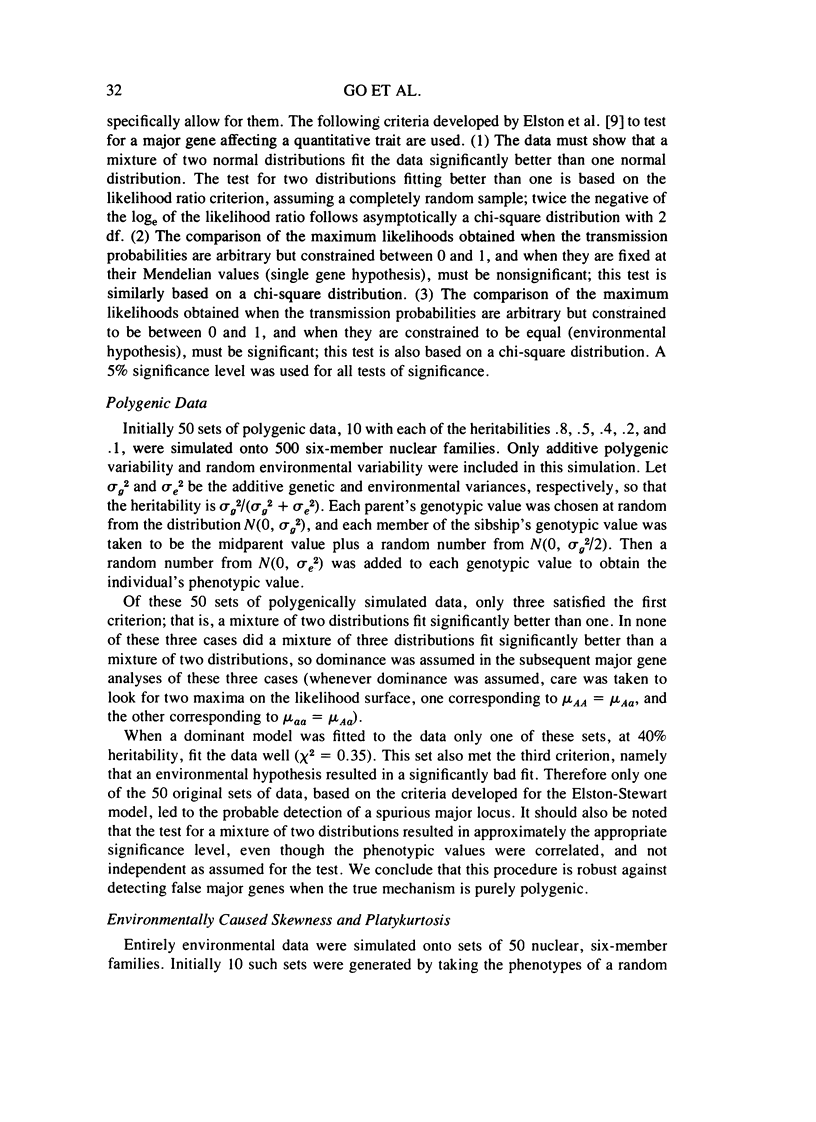
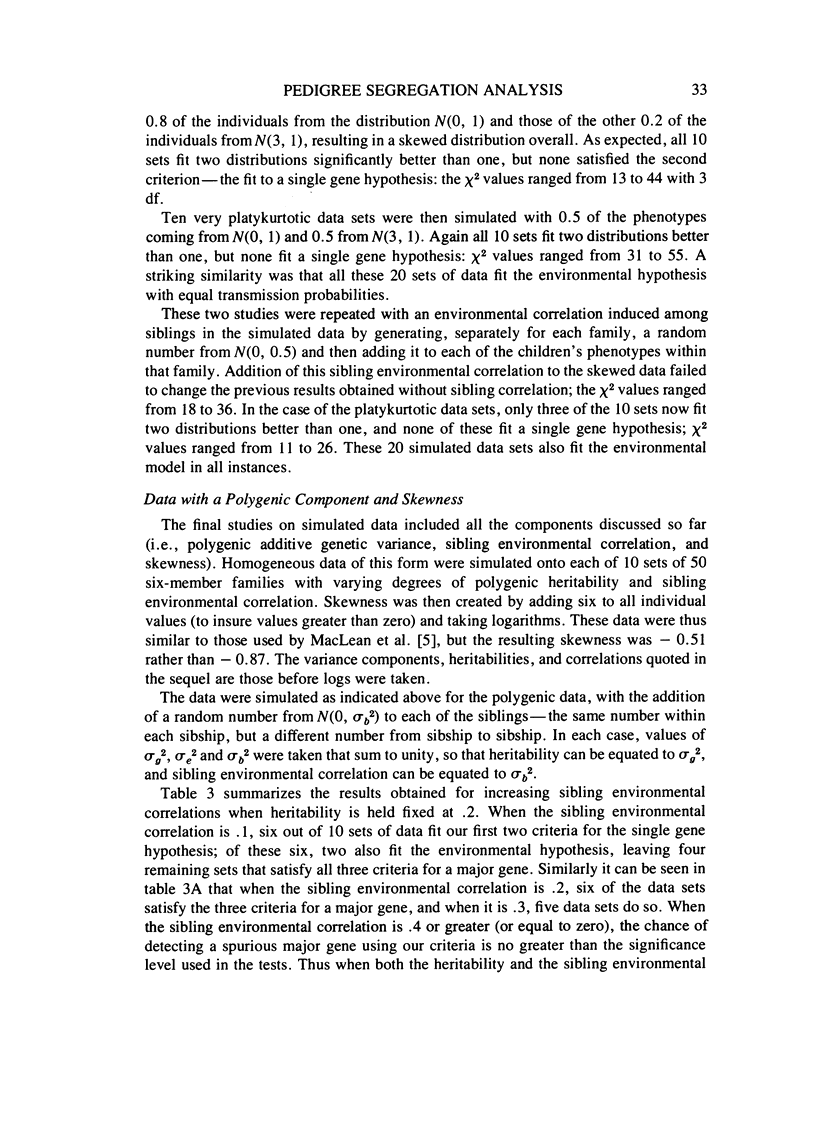
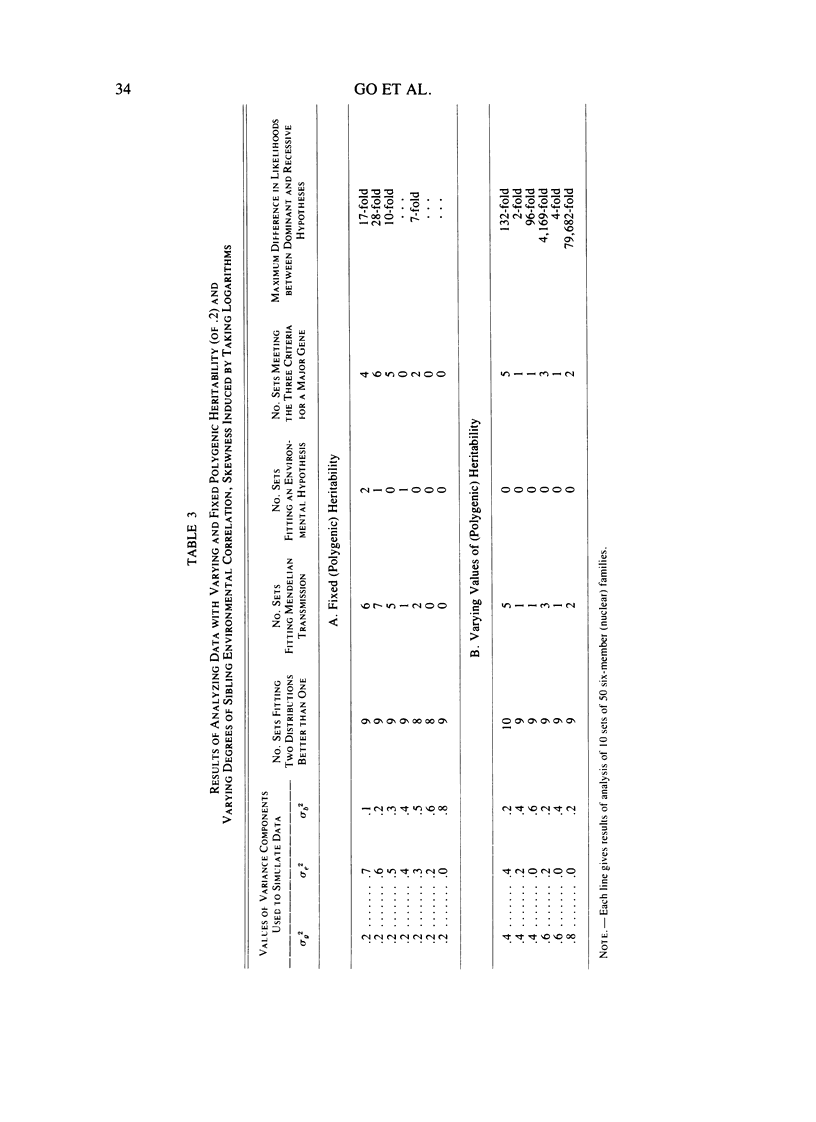
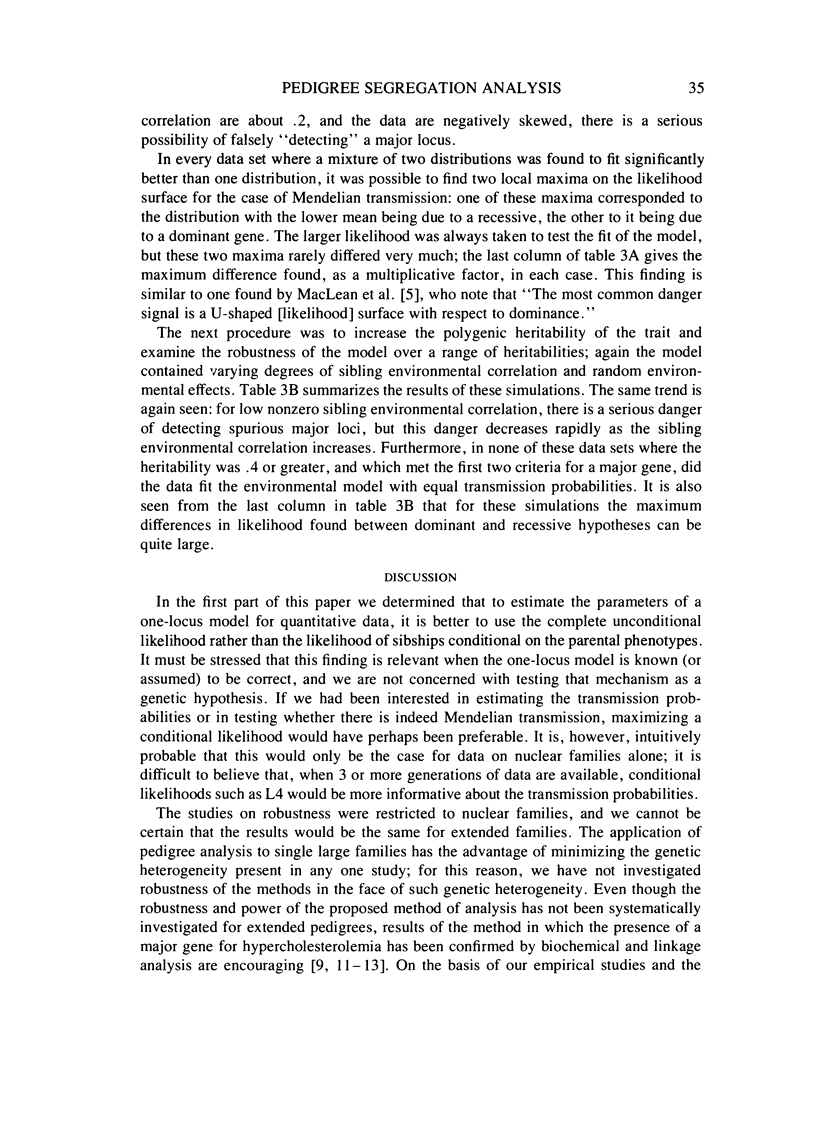
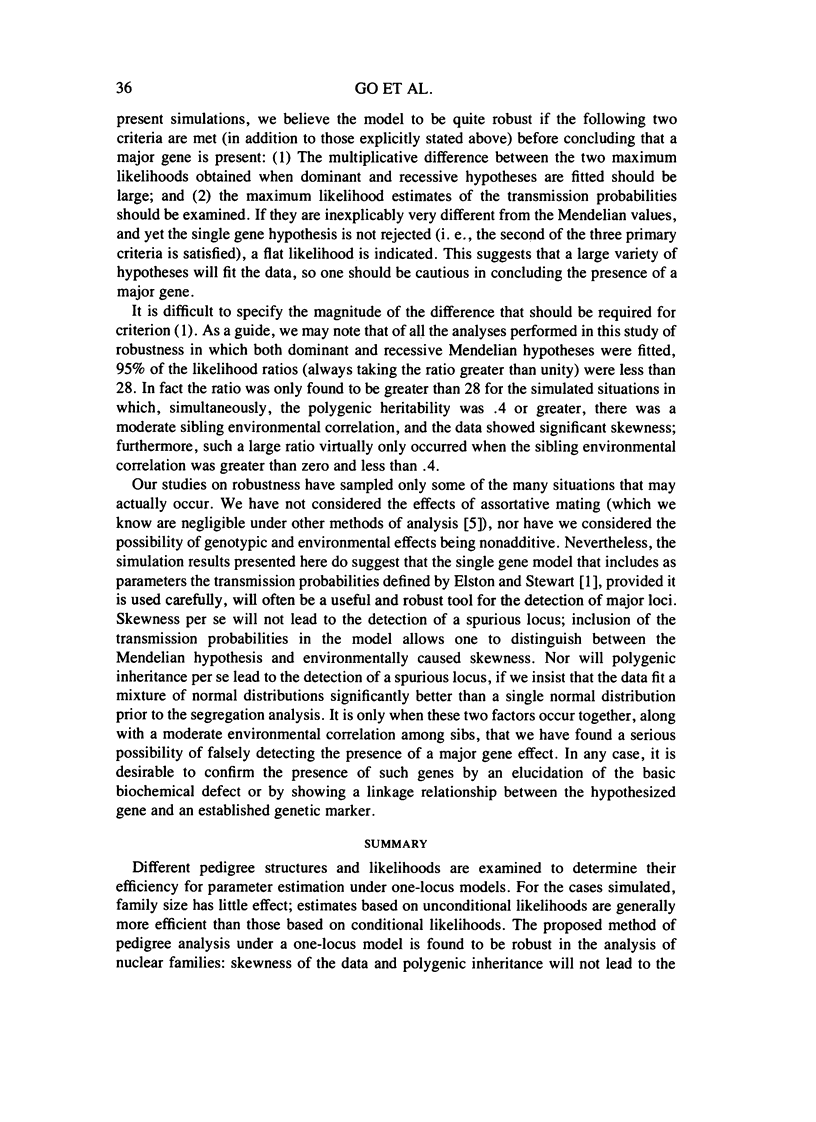
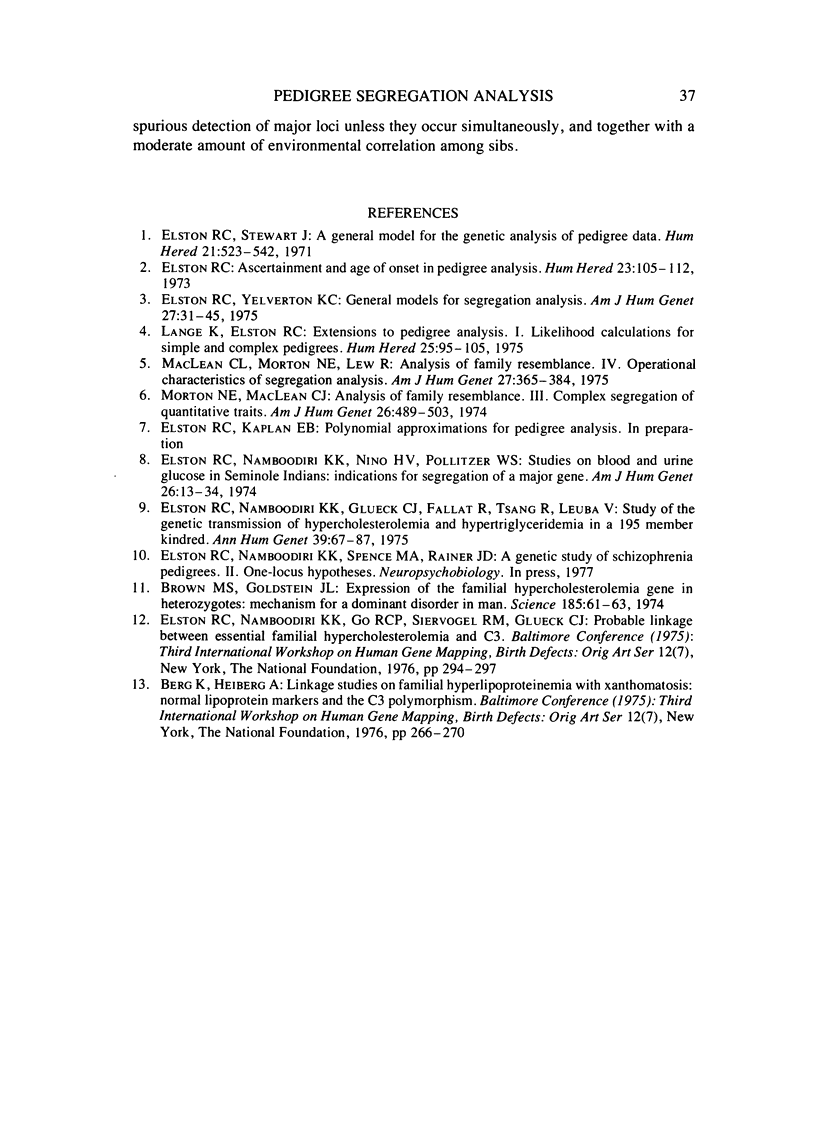
Selected References
These references are in PubMed. This may not be the complete list of references from this article.
- Berg K., Heiberg A. Linkage studies on familial hyperlipoproteinemia with xanthomatosis: normal lipoprotein markers and the C3 polymorphism. Birth Defects Orig Artic Ser. 1976;12(7):266–270. [PubMed] [Google Scholar]
- Brown M. S., Goldstein J. L. Expression of the familial hypercholesterolemia gene in heterozygotes: mechanism for a dominant disorder in man. Science. 1974 Jul 5;185(4145):61–63. doi: 10.1126/science.185.4145.61. [DOI] [PubMed] [Google Scholar]
- Elston R. C. Ascertainment and age of onset in pedigree analysis. Hum Hered. 1973;23(2):105–112. doi: 10.1159/000152561. [DOI] [PubMed] [Google Scholar]
- Elston R. C., Namboodiri K. K., Glueck C. J., Fallat R., Tsang R., Leuba V. Study of the genetic transmission of hypercholesterolemia and hypertriglyceridemia in a 195 member kindred. Ann Hum Genet. 1975 Jul;39(1):67–87. doi: 10.1111/j.1469-1809.1975.tb00109.x. [DOI] [PubMed] [Google Scholar]
- Elston R. C., Namboodiri K. K., Go R. C., Siervogel R. M., Glueck C. J. Probable linkage between essential familial hypercholesterolemia and third complement component (C3). Cytogenet Cell Genet. 1976;16(1-5):294–297. doi: 10.1159/000130613. [DOI] [PubMed] [Google Scholar]
- Elston R. C., Namboodiri K. K., Nino H. V., Pollitzer W. S. Studies on blood and urine glucose in Seminole Indians: indications for segregation of a major gene. Am J Hum Genet. 1974 Jan;26(1):13–34. [PMC free article] [PubMed] [Google Scholar]
- Elston R. C., Stewart J. A general model for the genetic analysis of pedigree data. Hum Hered. 1971;21(6):523–542. doi: 10.1159/000152448. [DOI] [PubMed] [Google Scholar]
- Elston R. C., Yelverton K. C. General models for segregation analysis. Am J Hum Genet. 1975 Jan;27(1):31–45. [PMC free article] [PubMed] [Google Scholar]
- Lange K., Elston R. C. Extensions to pedigree analysis I. Likehood calculations for simple and complex pedigrees. Hum Hered. 1975;25(2):95–105. doi: 10.1159/000152714. [DOI] [PubMed] [Google Scholar]
- MacLean C. J., Morton N. E., Lew R. Analysis of family resemblance. IV. Operational characteristics of segregation analysis. Am J Hum Genet. 1975 May;27(3):365–384. [PMC free article] [PubMed] [Google Scholar]
- Morton N. E., MacLean C. J. Analysis of family resemblance. 3. Complex segregation of quantitative traits. Am J Hum Genet. 1974 Jul;26(4):489–503. [PMC free article] [PubMed] [Google Scholar]


